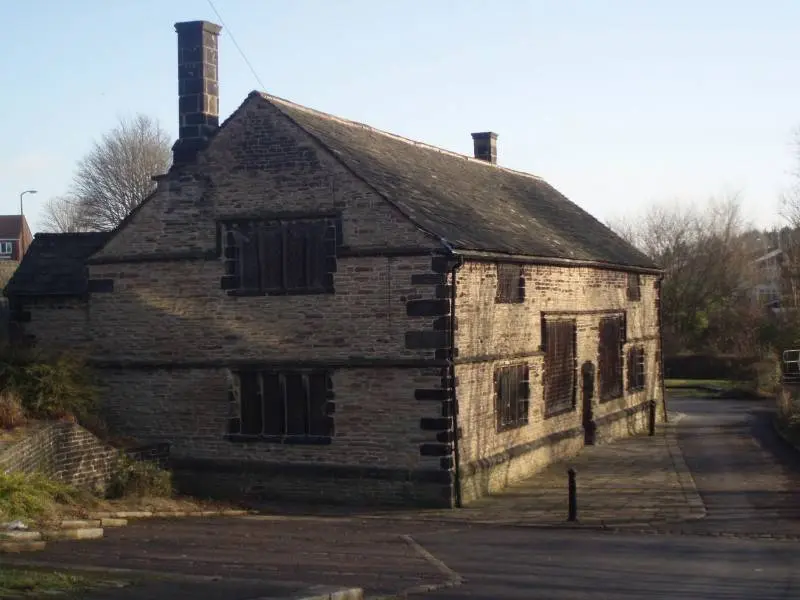The Old Grammar School - Middleton
Over 500 views on venues4hire.org

The Old Grammar School - The Old Grammar School
To make a booking or enquire about hiring this venue please use the contact details below - Please mention Venues for Hire
0161 643 2693
Bookings Administrator
Use contact form below
The Old Grammar School description
School / College / Library
Medium (1-150)
Canon Raines, the Victorian historian, records his finding that Thomas Langley was indeed of the feudal house of Middleton, though others had attempted to prove otherwise. In August 1412, then being Prince Bishop of Durham, and in between his two terms of office as Chancellor of England, he consecrated ‘Middleton Parish Church’, having rebuilt it at his own cost, and re-dedicated it to St Leonard. At the same time, he founded a chantry on the North side of the chancel and dedicated it to the Blessed Virgin Mary and Saint Cuthbert. The inclusion of St Cuthbert was not only owing to Thomas Langley’s Bishopric at Durham, but records show that St. Cuthbert’s body rested awhile on its long journey at “Middleton, near Mamcester”.
Thomas Langley was the original founder of Middleton Grammar School. He endowed the chantry in order not only that the priest might chant masses for the soul of the dead benefactor, (Thomas Langley died on November 20th 1437), but that he might also teach and educate the living children of Middleton. The endowment of the chantry, that the priest might teach the children of Middleton, was the original foundation of the Grammar School. “The endowment amounted to £6. 13s. 4d of which £5. 10s. 8d is still paid by the Duchy of Lancaster to the headmaster” So wrote John Dean at the end of the last century. The screen to the Langley Chapel at St Leonard’s Church is from Langley’s church of 1412.The Nowell Brothers
A hundred years after its endowment, Thomas Langley’s chantry was still giving a good Latin education to boys in the area. In 1520, a priest who proved himself to be a good educationalist was Thomas Mawdsley. So good was he that the Nowell brothers, Robert and Alexander, came from Read in Pendle to be educated here, alongside their Assheton cousins at Middleton Hall. From here, they went to Brazenose College, Oxford. These were the days when Wolsey was deposed; the Reformation inspired by Luther was under way; and this kingdom saw great turbulence during the latter years of King Henry VIII. “Robert Nowell was a wealthy London lawyer, and Alexander entered the church, upholding the Protestant religion and faith with intense vigour”. So writes Peggy Smith. He left England when Mary Tudor became Queen, returning as Dean of St Paul’s in London during the reign of Queen Elizabeth I.
Robert Nowell, as he was dying, spoke to his brother Alexander, “.....forget not Middleton School and Brazenose College, where we were taught in our youth, and, if you should procure anything with my money, do it in the name of the Queen whose poor servant I have been”
Queen Elizabeth I’s document
With the help of Lord Burleigh, Alexander Nowell was granted letters patent by Queen Elizabeth I on 11th August 1572. Her majesty’s actual document declares that - “for the better informing, training and educating in good letters of the children and youths dwelling in Middleton and neighbouring parishes ....there shall be forever a free and perpetual Grammar School within the said town and Parish of Middleton, which shall endure for all future time and shall be named “The Free School of Queen Elizabeth in Middleton’ The building was completed in 1586.
The Present
The Old Grammar School was finally closed around the turn of the century. The building was sold in 1909 at auction for £400. A year later the new Queen Elizabeth Grammar School in Rectory Street was formed around a new Foundation with funds from a settlement by Brazenose College, a charitable donation, Middleton Town Council and Lancashire County Council. It became a Voluntary Controlled School under the 1944 Education Act and in 1964 moved to Alkrington. In 1990 it was again moved this time to the other side of the Town, to Hollin, and refounded as a County Secondary School with the title of The Queen Elizabeth School. At that time the original charitable trust became separated from the school and was renamed the Queen Elizabeth Foundation with a new scheme for the benefit amongst other things of The Queen Elizabeth School and Middleton Technology School and their former pupils in further education. The Queen Elizabeth School became St Anne’s Academy in 2007.
The Old Grammar School from Whitbrook
After this the Old School was used as a Sunday School, for Youth Work, outreach, including mission services, often staffed by a Church Army Captain or Sister. By the early 1960s various problems led to the school being leased to the Middleton Operatic and Dramatic Society. The P.C.C. received the building back in 1990 and then set about considering its future, aware of the concerns about its deterioration. It began with a Feasibility Study leading to the obtaining of planning permission and consultation with English Heritage who advised the formation of a separate charitable trust. The Old Grammar School Trust was then legally established in July 1996. The Trust made an application for grant aid to English Heritage and to the National Heritage Lottery Board resulting in an offer of a grant for the restoration in late July 1997.
Thomas Langley was the original founder of Middleton Grammar School. He endowed the chantry in order not only that the priest might chant masses for the soul of the dead benefactor, (Thomas Langley died on November 20th 1437), but that he might also teach and educate the living children of Middleton. The endowment of the chantry, that the priest might teach the children of Middleton, was the original foundation of the Grammar School. “The endowment amounted to £6. 13s. 4d of which £5. 10s. 8d is still paid by the Duchy of Lancaster to the headmaster” So wrote John Dean at the end of the last century. The screen to the Langley Chapel at St Leonard’s Church is from Langley’s church of 1412.The Nowell Brothers
A hundred years after its endowment, Thomas Langley’s chantry was still giving a good Latin education to boys in the area. In 1520, a priest who proved himself to be a good educationalist was Thomas Mawdsley. So good was he that the Nowell brothers, Robert and Alexander, came from Read in Pendle to be educated here, alongside their Assheton cousins at Middleton Hall. From here, they went to Brazenose College, Oxford. These were the days when Wolsey was deposed; the Reformation inspired by Luther was under way; and this kingdom saw great turbulence during the latter years of King Henry VIII. “Robert Nowell was a wealthy London lawyer, and Alexander entered the church, upholding the Protestant religion and faith with intense vigour”. So writes Peggy Smith. He left England when Mary Tudor became Queen, returning as Dean of St Paul’s in London during the reign of Queen Elizabeth I.
Robert Nowell, as he was dying, spoke to his brother Alexander, “.....forget not Middleton School and Brazenose College, where we were taught in our youth, and, if you should procure anything with my money, do it in the name of the Queen whose poor servant I have been”
Queen Elizabeth I’s document
With the help of Lord Burleigh, Alexander Nowell was granted letters patent by Queen Elizabeth I on 11th August 1572. Her majesty’s actual document declares that - “for the better informing, training and educating in good letters of the children and youths dwelling in Middleton and neighbouring parishes ....there shall be forever a free and perpetual Grammar School within the said town and Parish of Middleton, which shall endure for all future time and shall be named “The Free School of Queen Elizabeth in Middleton’ The building was completed in 1586.
The Present
The Old Grammar School was finally closed around the turn of the century. The building was sold in 1909 at auction for £400. A year later the new Queen Elizabeth Grammar School in Rectory Street was formed around a new Foundation with funds from a settlement by Brazenose College, a charitable donation, Middleton Town Council and Lancashire County Council. It became a Voluntary Controlled School under the 1944 Education Act and in 1964 moved to Alkrington. In 1990 it was again moved this time to the other side of the Town, to Hollin, and refounded as a County Secondary School with the title of The Queen Elizabeth School. At that time the original charitable trust became separated from the school and was renamed the Queen Elizabeth Foundation with a new scheme for the benefit amongst other things of The Queen Elizabeth School and Middleton Technology School and their former pupils in further education. The Queen Elizabeth School became St Anne’s Academy in 2007.
The Old Grammar School from Whitbrook
After this the Old School was used as a Sunday School, for Youth Work, outreach, including mission services, often staffed by a Church Army Captain or Sister. By the early 1960s various problems led to the school being leased to the Middleton Operatic and Dramatic Society. The P.C.C. received the building back in 1990 and then set about considering its future, aware of the concerns about its deterioration. It began with a Feasibility Study leading to the obtaining of planning permission and consultation with English Heritage who advised the formation of a separate charitable trust. The Old Grammar School Trust was then legally established in July 1996. The Trust made an application for grant aid to English Heritage and to the National Heritage Lottery Board resulting in an offer of a grant for the restoration in late July 1997.
Venue suitability
This venue is suitable for the following uses:
Venue facilities
Other venue facilities
We don't currently hold any detailed information about the rooms at this Venue.
If this is your Venue or Hall please use the Adopt link on the right to add more detailed information about this Venue.
If you wish to hire this Venue or Hall please use the contact details on the overview tab.
Please encourage every Venue to take a few minutes to 'Adopt' their listing and add unique content and photos.
